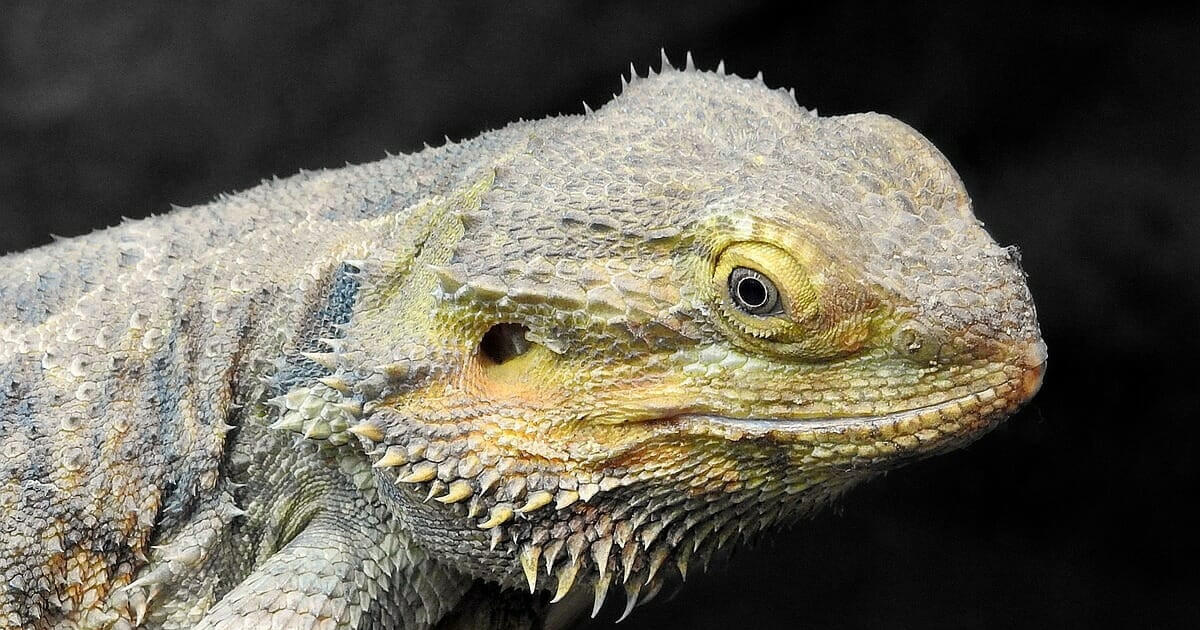Bearded Dragon Behavior
In this post we learn about a number of bearded dragon behavior patterns and can use this to help us keep our dragon happy and safe

Last Updated: November 22nd, 2021
By: Claire
Table of Contents
Common Bearded Dragon Behavior
Whilst every bearded dragon character is unique and they all do things slightly differently. But they all share common bearded dragon behavior patterns. Indeed some of these patterns are common across multiple lizards and reptiles. Some bearded dragon behavior though is unique to them. Let’s have a look at the various behaviour patterns they indulge in.
Why Does My Bearded Dragon Head Bob?
This is one of the more common bearded dragon behavior patterns. It’s a social sign among the Bearded Dragon crowd. Bearded dragons are generally solitary creatures, not coming into contact with each other very often in the sparse desert of Australia – but when they do they have a social pecking order like most animals.
Fast head bobbing is a sign of dominance or aggression. It’ll usually be a dominant male that bobs his head fast and aggressively to intimidate any other males around him, especially juniors.
A slow head bob is a sign of submission, usually in response to a dominant head bobbing dragon. It’ll often be a female or a junior that does the slow head bob to show that they accept the more dominant reptile’s position on the pecking order.
It can also signify the beginning of a fight, so if you have 2 bearded dragons in close proximity (such as the same vivarium) it would be wise to recognise this sign and separate them for a while until they calm down a bit.
Finally, just to confuse matters even more, it can also simply be an acknowledgement of your presence. Our bearded dragon Billie often does a little head bob when we walk into the room just to say hello. Billie is the most chilled bearded dragon we’ve ever met.
Why Does My Bearded Dragon Wave?
Similar to the slow head bob this is a social sign among Beardies. This is a submissive act, often in response to a dominant fast head bob, the submissive Beardie will lift their front leg slowly and deliberately to show it accepts the dominance of the other dragon. The arm waving usually goes in a circle and is usually very obvious with the waving dragon standing high on the other three legs.
The wave may or may not be accompanied by a slow head bob.
Why Does My Bearded Dragon Show His Beard?
This can often happen as a sign of fear, or at least, as an attempt for Beardie to make themselves look bigger and more threatening in the presence of a predator or animal that they’re not too sure about. It’s usually a sign that they’re feeling threatened. It might be accompanied by a blackening of the beard as this can also look more threatening to other animals who’ll then hopefully decide to leave the Dragon alone.
On occasions the beard fluffing can be associated with the bearded dragon making a hissing sound too.
Sometimes the bearded dragon will just show their beard to give it a stretch though.
Why Do My Bearded Dragons Lay On Top Of Each Other?
This is a sign of dominance by the dragon that is on top. Whilst it might look cute and cuddly from a human perspective, it is very much a dominance sign in the reptile world. Bearded Dragons, like all reptiles are cold blooded and need to get their heat from, generally, the sun. Or in the case of captive Beardies they need to get the heat and light from the heat lamp at the top of the vivarium.
With that in mind, the dragon on the top of the pile is the one getting the UV and heat and thus is the one most likely to survive. Nature is all about survival of the fittest so hence why this cute and cuddly looking interaction is in fact a sign of dominance.
If you cohabit your dragons ( and we don’t generally recommend that ) and you’re seeing this happen regularly with the same dragon always on top, it might be wise to separate them. Insufficient UV light received by the more submissive dragon will potentially lead to Metabolic Bone Disease (MBD) and the reduced heat levels will impair their digestive systems and willingness to eat.
